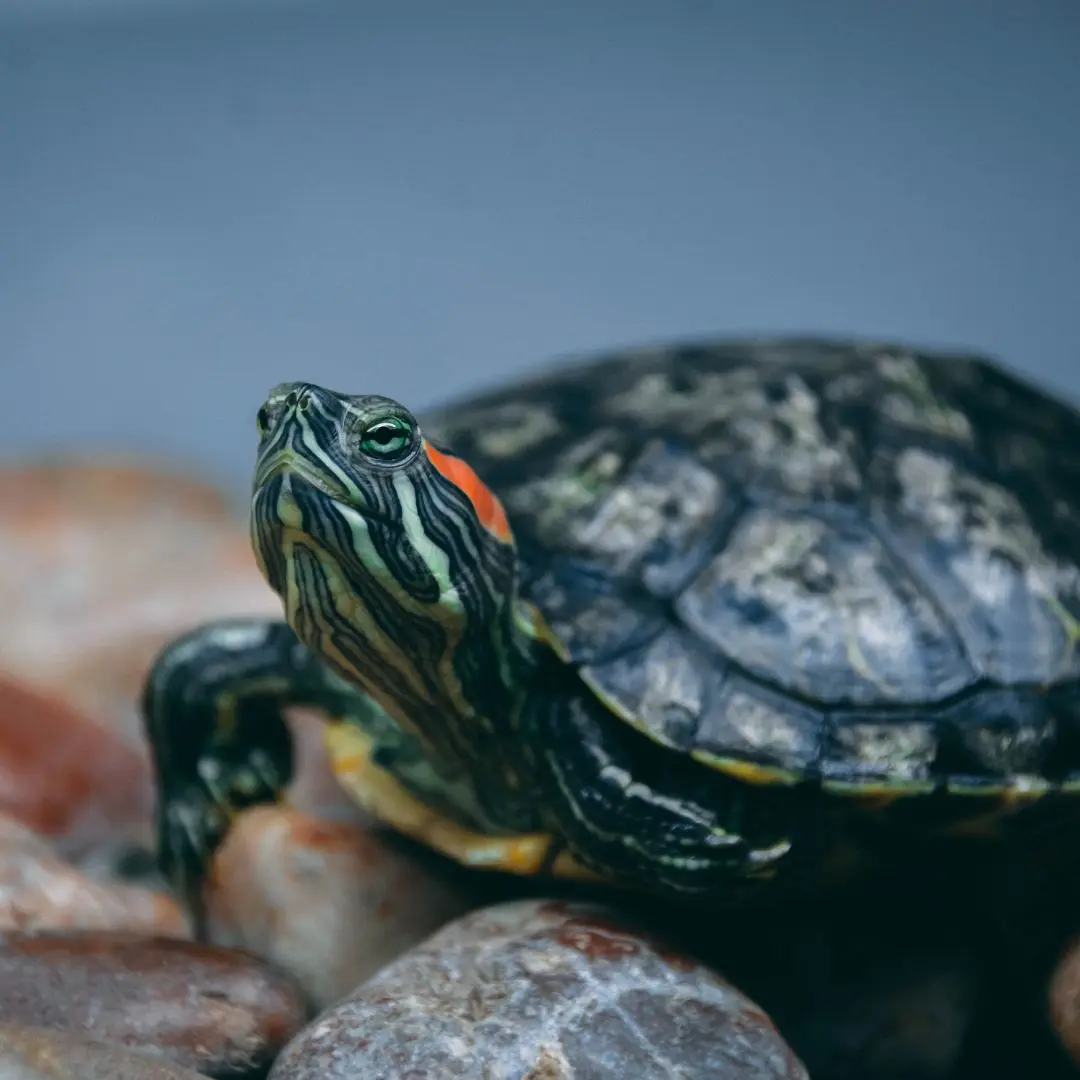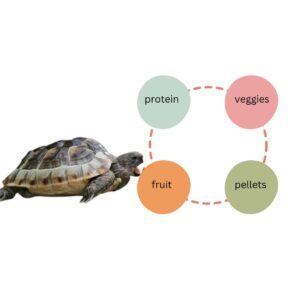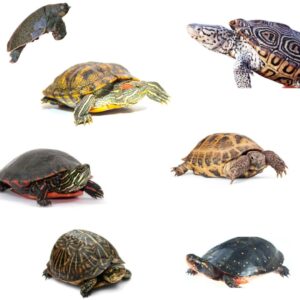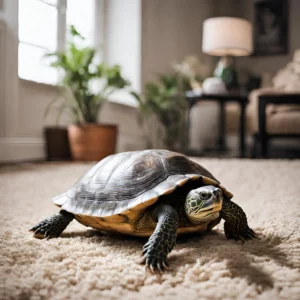Imagine basking on a warm, smooth stone under the sun’s rays. Sounds idyllic, right? But for turtles, this isn’t a vacation fantasy, it’s a crucial part of their well-being.
So, when setting up your turtle tank, the question arises: do turtles need rocks?
This seemingly simple question can lead down a rabbit hole of conflicting information and uncertainty.
Some turtle owners swear by rocks, touting their basking and climbing benefits. Others warn of impaction hazards and messy cleanup.
Let’s talk rocks so you can decide if your turtle needs rocks.
Table of Contents
The Dilemma: Natural vs. Practical
The biggest concern with rocks is impaction, a potentially fatal condition where turtles ingest rocks too large to pass down their tract. This can lead to digestive blockages and serious health problems.
Rocks can trap waste, making tank maintenance a chore. Plus, sharp edges can injure your turtle.
While rocks mimic a natural environment, they might not be necessary for all turtle species – some prefer soft substrates like sand for digging.
The good news is, a rock-free tank doesn’t have to be a barren wasteland. Here are some enriching alternatives:
- Driftwood: Provides basking spots, climbing opportunities, and a natural look.
- Floating platforms: Offer basking areas and hiding spots.
- Live plants: Improve water quality and add visual interest.
- Smooth pebbles (large!): Can be safe for digging and add a natural touch.
Does Your Turtle Need Rocks In Their Tank?
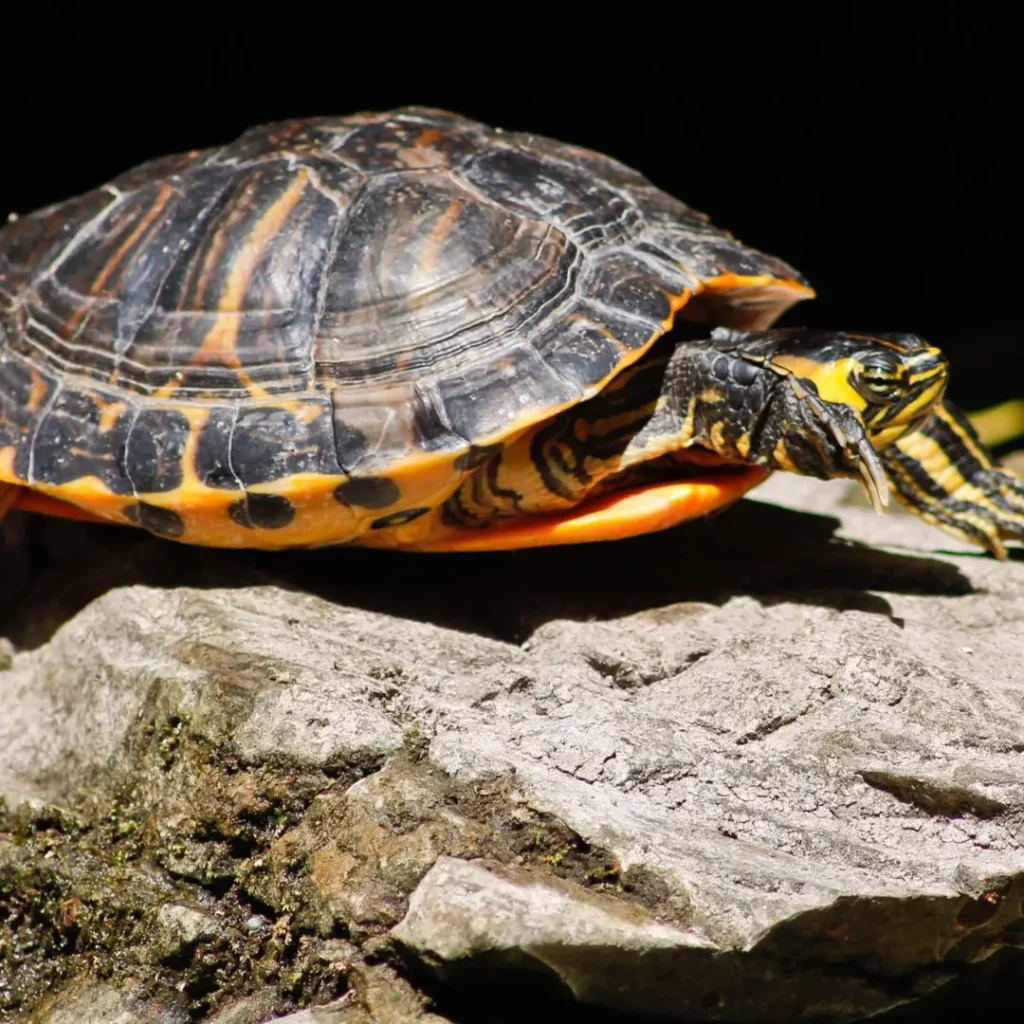
Whether turtles need rocks in their tank depends on a few factors, mostly the benefits they provide and whether there are any possible risks.
Here are a few guidelines to follow when choosing rocks for your turtle’s tank:
- Benefits:
- Enrichment: Large, smooth rocks can provide basking spots and climbing opportunities, mimicking their natural environment and keeping them mentally stimulated.
- Water quality: A thin layer of smooth pebbles can help filter debris and bacteria, improving water quality.
- Aesthetics: Rocks can enhance the visual appeal of the tank.
- Drawbacks of Rocks:
- Ingestion hazard: Small rocks can be accidentally swallowed, leading to impaction or other health problems.
- Injuries: Rough or sharp rocks can scratch or injure the turtle’s shell or skin.
- Cleaning difficulty: Rocks can trap waste, making it harder to clean the tank thoroughly.
- Important considerations:
- Turtle species: Some species, like mud turtles, prefer a soft substrate and may not benefit from rocks.
- Rock size: Choose rocks at least 3 times the size of the turtle’s head to avoid ingestion. Smooth, round rocks are safest.
- Quantity: Keep the rock layer thin (1-2 inches) to avoid traps and facilitate cleaning.
- Alternatives: Consider other enrichment options like driftwood, plants, or floating platforms.
Types of Rock for Turtle Tank
Although rocks are not the safest option for a substrate, it doesn’t necessarily mean you can’t make them safe. For instance, a lot of turtle parents recommend and use them.
The two most popular types of rock are gravel and river rocks. They tend to have rounder, smoother edges compared to most other types.
What Kind of Rocks Are Good for Turtle Tanks?
To help you out, here are some of the best rocks to consider for your turtle’s tank:
- Royal Imports: These are typically large in size for most turtles, non-toxic, and don’t tend to emit odors.
- Fluorite: Excellent choice if you want to have plants flourishing in your turtle’s tank, helping mimic their natural environment and providing valuable nutrients.
Fluorite provides the plants in water with needed nutrients to grow, which will help with the water filtration in the tank.
- Sackorange Gravel: Another great example of larger rocks. They’re also well-rounded and smooth.
Here are some great rocks for your turtle tank:
GasSaf 5 Pounds Polished Pebbles
What do you put in the bottom of a turtle tank?
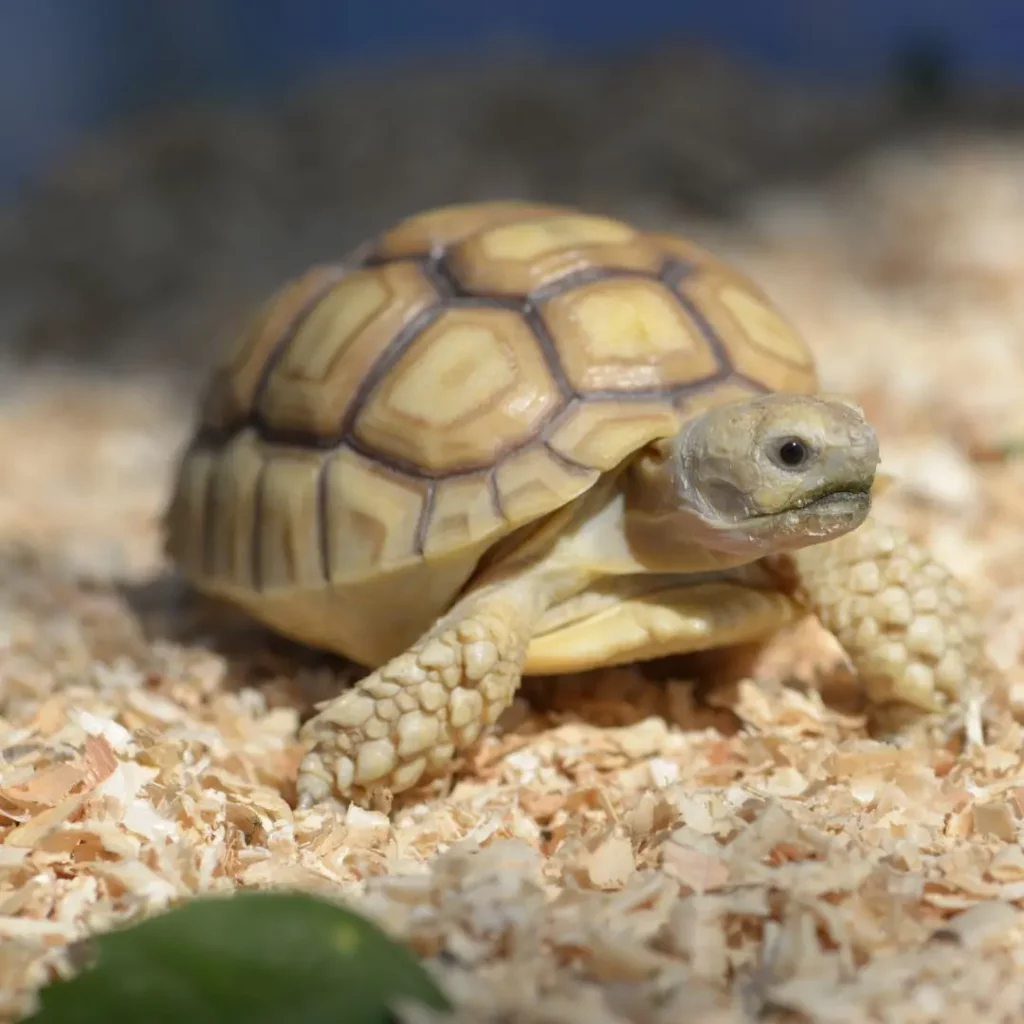
A substrate for your turtle’s tank is mandatory for establishing a healthy environment. The right substrate offers many benefits that contribute to their happiness and health, helping turtles live longer.
Let’s go through some common reasons why turtles need substrate in their tank.
Natural Habitat Imitation
The right substrate can add a texture similar to your turtle’s natural habitat, providing a more defined ‘’ground’’ area.
A natural substrate mimics the textures and complexities of your turtle’s natural habitat, stimulating their natural instincts and providing beneficial mental and physical stimulation.
This replica of their natural environment will help encourage activities such as climbing, digging, and foraging – a natural behavior important for turtles. More precisely, this will prevent boredom and stress leading to a happier and healthier turtle.
And, of course, it will add a more aesthetic look to your turtle’s home.
Waste Hiding and Odor Control
Turtle waste, both solid and liquid, can be unsightly and smelly. Like rocks or sand, a substrate helps hide and trap waste naturally.
Substrates can reduce tank cleaning frequency and make your turtle’s home more aesthetically pleasing.
Pest and Disease Prevention
Bare-bottomed tanks are more prone to infestations of harmful parasites and mites that can harm your turtle’s health. A substrate provides beneficial bacteria with surfaces to colonize, which play a critical role in breaking down waste and maintaining a healthy tank ecosystem.
This natural filtration system helps to keep the water clean and free of harmful toxins, ensuring your turtle’s well-being. By trapping debris and waste, a substrate reduces the risk of disease outbreaks and promotes a healthier tank environment.
Temperature Regulation
Some substrates have a design that allows them to cover a heating system underneath, creating a natural temperature gradient. An adequate temperature is important for cold-blooded animals like turtles.
This type of substrate allows your turtle to regulate its body temperature effectively by moving between warmer and cooler areas of the tank.
Common Types of Substrates to Consider
There are several types of substrate for turtle tanks, and each one has multiple benefits for a turtle’s habitat – and some drawbacks too. The most popular choices turtle parents choose are:
- Gravel
- River rocks
- Sand
- Crushed coral
- Tiles
Let’s check the pros and cons of each type.
Gravel
- Pros: One major advantage of gravel is its ease of cleaning. Due to its small size, it prevents food and algae from accumulating underneath. Additionally, its weight ensures that it won’t be easily sucked up by a siphon.
Another positive side of gravel is that it can enhance the aesthetic appeal of a tank. Gravel can create a visually stunning aquarium with various colors, such as white, black, blue, red, and even fluorescent options.
- Cons: Less experienced turtle owners often choose too small rocks, so there’s always a chance of curios turtles trying to eat them.
This can cause intestinal blockage and result in internal bleeding, leading to severe health issues and potential fatality.
Also, a lot of sellers add calcium to the gravel. While calcium benefits turtles, excessive amounts can cause calcium pyramiding, another risk you shouldn’t take.
River Rocks
- Pros: River rocks are a great option because they’re heavy enough to stay in place, preventing your turtle from moving them and disrupting your desired tank arrangement.
Unlike other options, river rocks are also easy to remove, making tank cleaning quick and simple.
These rocks are much safer than gravel, as even the smallest ones are usually too big for most turtles to ingest.
River rocks have smooth and rounded shapes, making them perfect for tank decoration, as there is no risk of your turtle getting injured or cut by sharp edges.
- Cons: The only negative side of using river rocks as a substrate is that no matter how you place them, they tend to leave a few holes here and there. This makes it easy to accumulate waste on the floor of the tank.
Sand
- Pros: Sand provides complete coverage of the tank bottom, preventing even the tiniest dirt particles from reaching the bottom. So, it’s relatively easy to clean because the debris tends to just sit on the top.
While it is possible for a turtle to ingest a few grains of sand occasionally, it poses no harm. Sand particles are small enough to pass through the intestines without causing blockages or infections.
- Cons: The grain size is important when choosing the sand for a substrate. It’s recommended to buy sand from pet stores. But if you’re getting it somewhere else, you want to ensure this sand is not powdery or fine.
Otherwise, the sand so fine will constantly cloud the water or even get into your filter and grind down the impeller – the motor that runs the filter.
Crushed Coral
- Pros: This one is a situational choice. Besides its aesthetics, you should only consider this type of substrate if you have a turtle with strong, growing beaks that need warning down – for example, Diamond-back Terrapin turtle.
Turtles like these will try to chomp on crushed coral. But unlike with gravel, they don’t tend to have problems digesting crushed corals in general.
- Cons: Similar to gravel, it poses a danger to most turtle species which can’t chew crushed coral down enough to digest it.
Tiles
- Pros: Tiles make the surface significantly smooth, so waste shows up on it pretty easily, and it’s super easy to clean because there’s no debris piling up in random areas.
- Cons: Due to their smooth surface, tiles don’t offer the texture of the tank floor. So, this substrate fails to mimic the natural environment that you’re turtle would appreciate.
Also, it can be a bit tricky to measure and resize the tiles into a proper size for your turtle’s tank.
Important Tank Considerations
- Tank Size: When choosing the right turtle tank size, it’s important to understand that turtles come in various sizes. It shouldn’t feel too cramped, but it’s also important to note that your turtle will keep growing, especially if you have/get a young one.
For instance, a Red-Eared Slider turtle (one of the most popular pet turtles) can grow up to 10~12 inches/25.4~30.5cm long.
You can keep hatchlings and small turtles in a 20~30 gallon/75.7~113.5 l water tank to accommodate your turtle’s growth. On the other hand, larger and more mature turtles typically require a habitat of 60~120 gallons/227.1~454.2 l.
- Water Depth: Ensure the water depth meets your turtle’s needs. Generally, the water should be twice as deep as your turtle’s length. For a 4-inch turtle, a minimum water depth of 6-8 inches is crucial.
What does a turtle need in its tank?
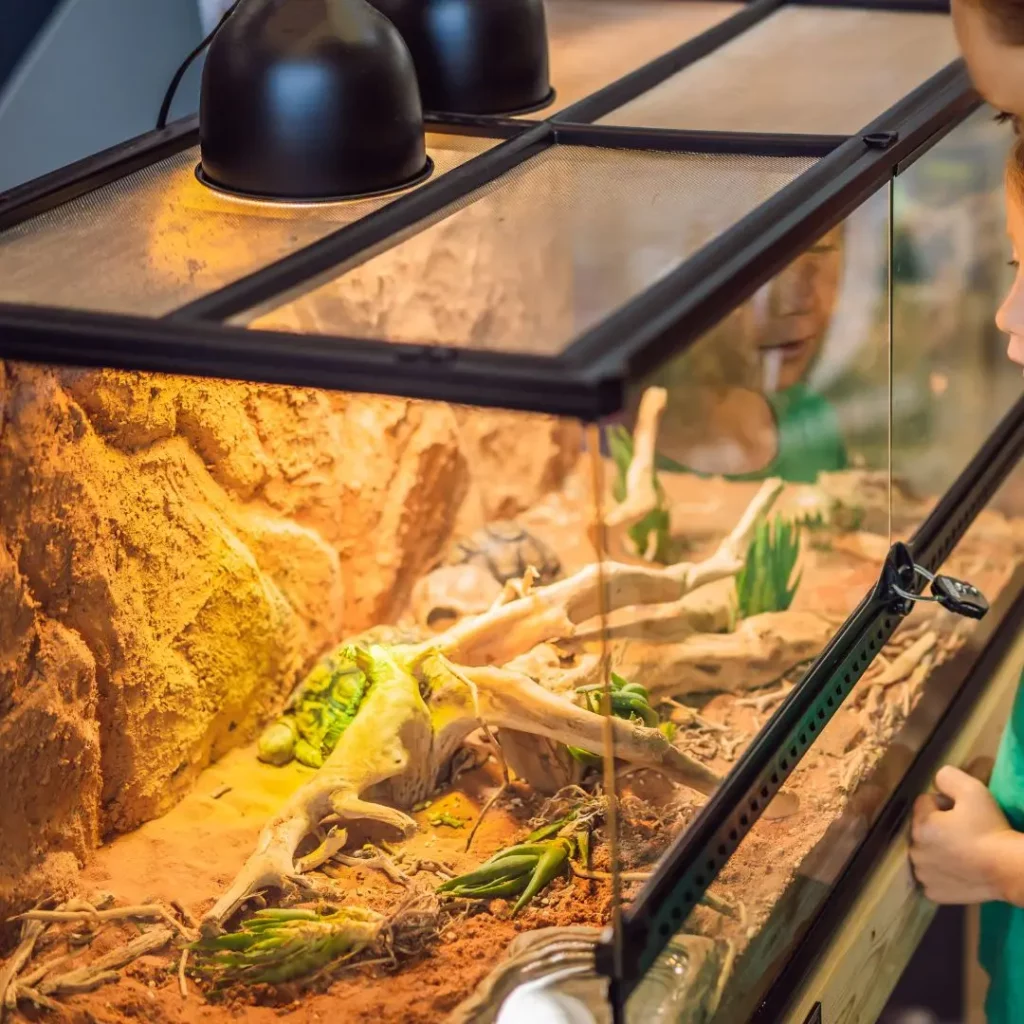
Many new turtle owners wonder if there are other important elements besides substrate to include in their turtle’s tank. And the answer is yes – there are other essentials they should have in their tank, regardless of pet turtle types.
Decor
- Provides enrichment: Turtles are naturally curious creatures that need mental stimulation. Decor-like pebbles (not too small for a turtle to consume), caves, (non-toxic) plants provide opportunities for exploring, hiding, and climbing, keeping your turtle engaged and reducing boredom.
Pro tip: Some of the best, safest plants for decor include Hornwort, Java Fern Microsorum, Anubias barteri, Greenpro Dwarf Hairgrass, and water lettuce.
- Recreates natural habitat: By mimicking the natural environment, decor helps your turtle feel more secure and comfortable, reducing stress and promoting healthy behaviors.
- Promotes exercise: Climbing on rocks and navigating through plants provides vital physical exercise for your turtle, keeping them active and healthy.
Basking Area
- Thermoregulation: Turtles are cold-blooded and rely on external heat sources to regulate their body temperature. A basking area, typically a dock above the water and under a basking light, allows your turtle to absorb heat and stay healthy.
- Digestion: Basking aids digestion by increasing the turtle’s internal temperature, allowing it to break down its food properly.
- Immune system: Basking helps boost your turtle’s immune system, making it more disease-resistant.
Here are some quality basking platforms you may want to check out:
- Basking Platform by Zilla
- Penn-Plax Reptology Turtle Basking Platform Ramp
- PENN-PLAX Reptology Turtle Topper – Above Tank Basking Platform
Basking Light/UVB Lighting
- Vitamin D3 synthesis: Emits UVB rays that stimulate the production of vitamin D3, crucial for strong bones and overall health.
- Prevents metabolic bone disease: Without adequate UVB light, turtles can develop metabolic bone disease, a serious condition that weakens bones and leads to deformities.
- Provides peace of mind: Basking is a natural behavior for turtles, and providing a basking light helps them feel secure and comfortable.
Cleaning Tube/Siphon
- Maintains water quality: A cleaning tube, also known as a siphon, helps remove waste and debris from the tank, keeping the water clean and healthy for your turtle.
- Reduces algae growth: Regular cleaning prevents the buildup of algae, which can harm your turtle and make the water cloudy.
- Reduces odor: Waste and debris can cause unpleasant odors, and using a cleaning tube helps keep the tank smelling fresh.
If you don’t have any siphons ready yet, check out some of these:
- Laifoo 7ft Aquarium Siphon Vacuum Cleaner
- Python Pro-Clean Aquarium Gravel Washer & Siphon Kit
- U-BCOO Aquarium Gravel Cleaner/Siphon Water Changer
Feeding Tub
- Reduces mess: A feeding tub allows you to deliver food directly to your turtle without disturbing the water, minimizing mess and keeping the tank cleaner.
- Prevents overfeeding: By controlling the amount of food you provide, you can help prevent overfeeding, which can lead to health problems for your turtle.
Pro tip: If you have enough budget, you can also opt for a tiny tank that comes with dedicated areas for food.
Here are a few ideas:
Do turtles need air stone?
In general, turtles do not need air stones in their tanks. Unlike fish, which breathe through gills and require dissolved oxygen in the water, turtles are air-breathing reptiles and get their oxygen directly from the atmosphere. They can stay submerged for long periods by absorbing oxygen through their skin and cloaca (a chamber that combines the digestive, urinary, and reproductive systems), but they still need access to the air surface to breathe.
However, there are some situations where an air stone might be beneficial for turtles:
- Poor water circulation: If your turtle tank has poor water circulation, an air stone can help to increase the oxygen levels throughout the water column. This can be especially important for turtles with respiratory problems.
- Overcrowded tanks: In heavily stocked tanks, the oxygen levels may become depleted more quickly. An air stone can help to ensure that all the turtles have access to sufficient oxygen.
- Adding visual interest: Some turtle owners simply enjoy the aesthetic of air bubbles in their tanks. However, it’s important to choose a quiet air stone that won’t disturb the turtles.
Things to consider before using an air stone with turtles:
- Noise: Some air stones can be quite noisy, which can stress the turtles. Choose a quiet air pump and stone combination.
- Water flow: Air stones can create strong water currents, which can be uncomfortable for turtles. Place the air stone in a way that doesn’t create a direct current towards the turtles.
- Maintenance: Air stones require regular cleaning to prevent them from becoming clogged with algae and debris.
Alternatives to air stones for oxygenating turtle tanks:
- Water filters: Most turtle filters help to oxygenate the water as they circulate it.
- Live plants: Live plants can help to oxygenate the water and provide additional filtration.
- Water changes: Regular water changes help to remove waste products and replenish oxygen levels.
My Senior Paws is a participant in the Amazon Services LLC Associates Program, an affiliate advertising program designed to provide a means for sites to earn advertising fees by advertising and linking to Amazon.com. We also participate in other affiliate programs which compensate us for referring traffic.
